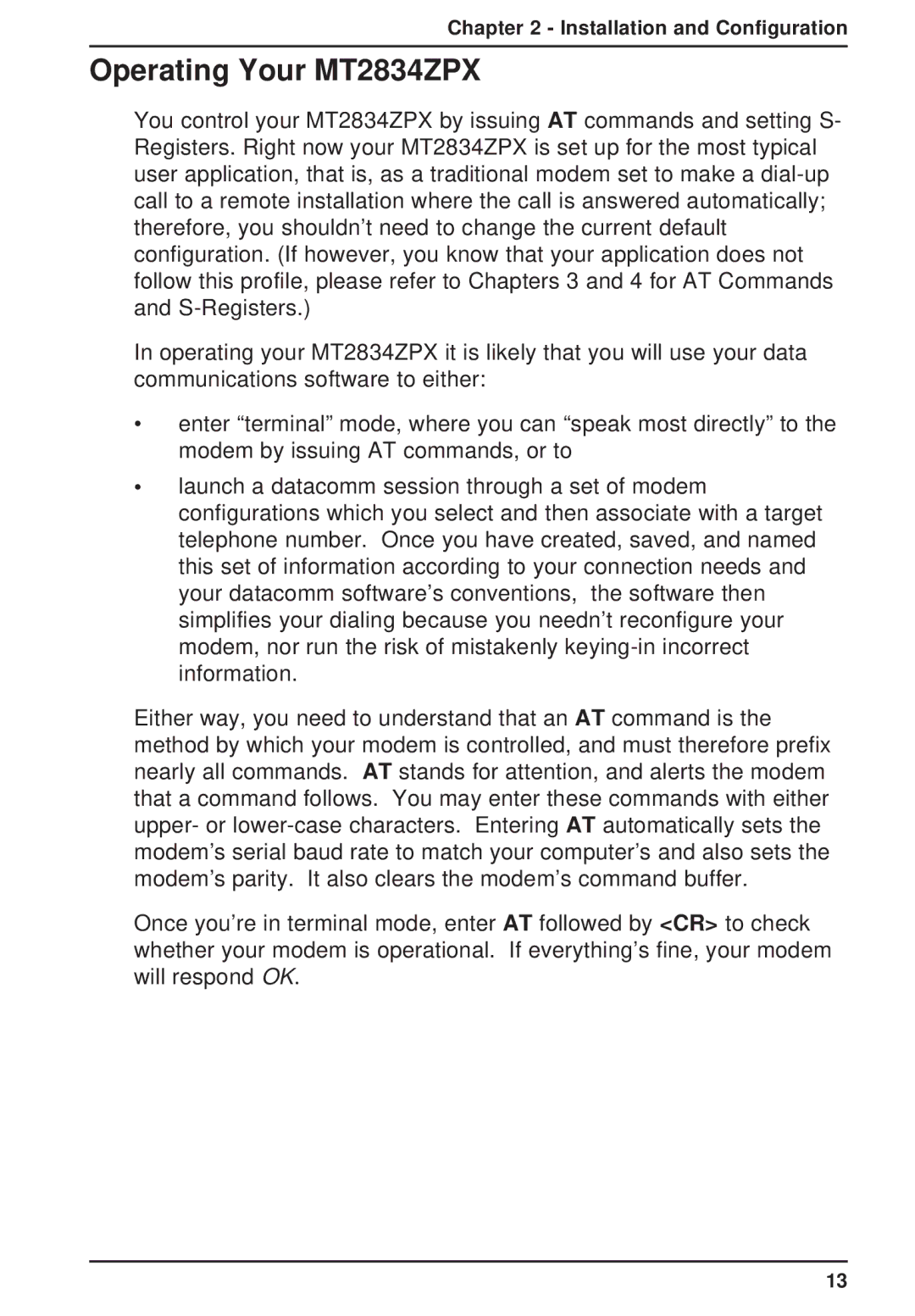
Chapter 2 - Installation and Configuration
Operating Your MT2834ZPX
You control your MT2834ZPX by issuing AT commands and setting S- Registers. Right now your MT2834ZPX is set up for the most typical user application, that is, as a traditional modem set to make a
In operating your MT2834ZPX it is likely that you will use your data communications software to either:
•enter “terminal” mode, where you can “speak most directly” to the modem by issuing AT commands, or to
•launch a datacomm session through a set of modem configurations which you select and then associate with a target telephone number. Once you have created, saved, and named this set of information according to your connection needs and your datacomm software’s conventions, the software then simplifies your dialing because you needn’t reconfigure your modem, nor run the risk of mistakenly
Either way, you need to understand that an AT command is the method by which your modem is controlled, and must therefore prefix nearly all commands. AT stands for attention, and alerts the modem that a command follows. You may enter these commands with either upper- or
Once you’re in terminal mode, enter AT followed by <CR> to check whether your modem is operational. If everything’s fine, your modem will respond OK.
13
